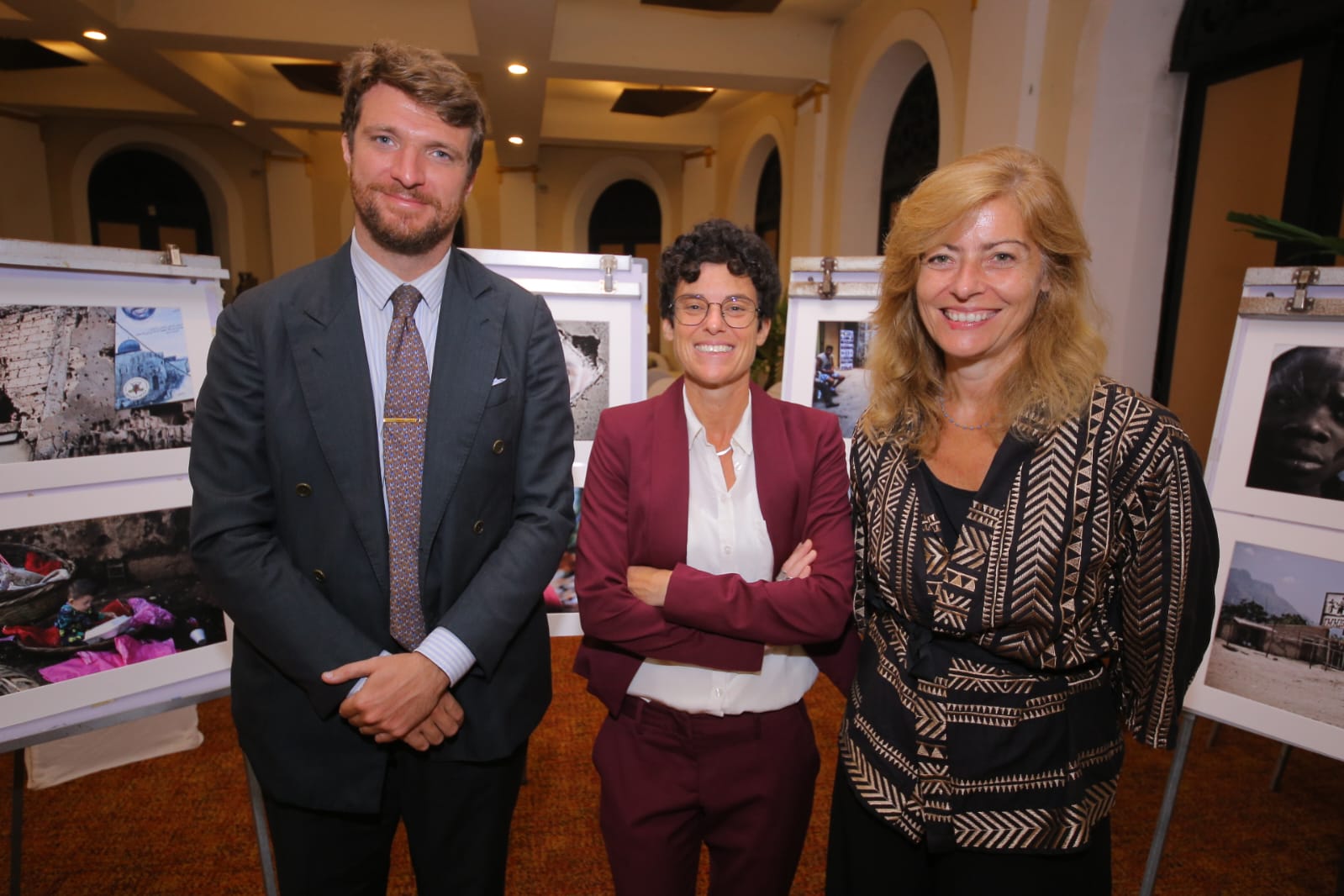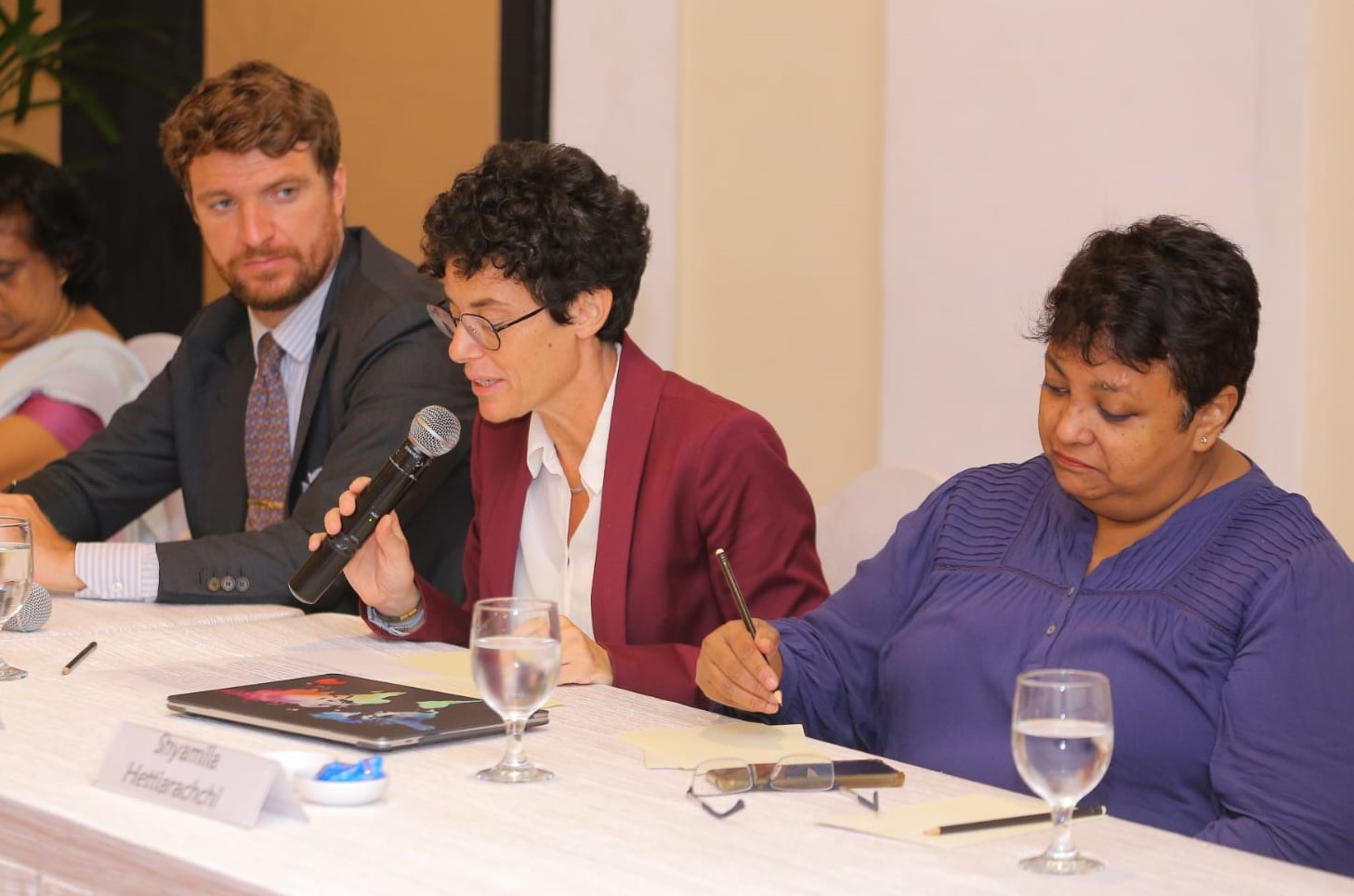THE UNIVERSITIES NETWORK
The National Action Plan on UNSCR1325 and the Impact of armed conflicts on Children
The Universities Network for Children in Armed Conflict and the Institute of Political Studies “S. Pio V”, supported by the Italian Ministry of Foreign Affairs and International Cooperation have organised a conference within the framework of the project ‘The National Action Plans (NAP) on UNSCR1325 and the impact of armed conflicts on children: a study and analysis of the International Universities Network”. The project aims to carry out qualitative and quantitative research and produce an insightful report, by geographical area, of the serious violations against children by armed conflict situations. The research also makes a valuable analysis of post-conflict reform, rehabilitation and reintegration of children affected by armed conflict and this is the critical path where UNSCR1325 can and should play a pivotal role.
Speaking about the objectives of this conference Laura Guercio, Professor of Sociology of Human Rights & International Cooperation to Development at the University of Perugia and a Professor of International Relations at the University Cusano Rome. A member of the Council of the European Law Institute in Vienna said, “ The NAP is to create a narrative and collate ideas on how Resolution 1325 can impact and support the global movement to reduce the direct and indirect impacts of armed conflict on children. To achieve this, we must expand the understanding and impact of Resolution 1325 from its gender perspective to reach children affected by armed conflict as well as create a wider umbrella of sustainable peacebuilding via the four pillars of Resolution 1325 – Participation, Protection, Prevention, and Relief and Recovery. The impact of armed conflict on children needs to deep dive into the areas.”
- Participation – how can we create a dialogue from a gender perspective to mutually include the protection of children under Resolution 1325 and how should the National Action Plans reflect this?
- Protection – how does the jurisdiction of the national and international communities work together to create a system of sustainable protection of children from armed conflict under the umbrella of Resolution 1325? (Considering that internal civil wars create a jurisdictional question for international community intervention)
- Prevention – what specific areas of direct and indirect impacts of armed conflict on children can Resolution 1325 address?
- Relief and Recovery – can Resolution 1325 play a larger role in the relief and recovery of children affected by armed conflict (as this is a critical impact point that tends to see a lot of children fall through the cracks)?
- Accountability – how do we improve accountability measures to support children and women affected by armed conflict?
Armed conflict causes severe direct and indirect consequences for children and most often the indirect consequences are not addressed due to the grave nature of the direct consequences, which are broadly defined as death, injury, recruited as child soldiers and violence against children. The dire consequences of the indirect harm caused to children during the armed conflict have a lasting impact on these children due to the double-barrelled trauma such as gross violations of being abducted, forced removal from their families, illegal detention and recruitment as child soldiers. In addition, these children are also deprived of their fundamental rights to education, shelter, and the right to build a fruitful and holistic life.
The project will also include videos and a photo exhibition by two Italian photo reporters, Marzia Ferrone and Vittorio Alonzo, on the condition of children living in armed conflict and post-conflict.
This conference provides the opportunity to build a comparative analysis of NAP’s of selected Asian countries vis a vis the IV Italian Action Plan in accordance with Resolution 1325.
Background to Conference and Research Topic
The charter of the United Nations Security Council (UNSC) is the maintenance of international peace and security. Security must be present, and its presence must be realised – this is a critical indicator of peace. As the popular saying goes, “The absence of war doesn’t necessarily mean the presence of peace”.
In 2000, The UNSC Resolution 1325 recalled 1261 (1999), 1265 (1999), 1296 (2000) and 1314 (2000) and;
- expressed concern about the fact that the majority of people affected by armed conflict are women and children,
- reaffirmed the role of women as “agents of lasting peace”: their equal participation in peacebuilding, maintaining and promoting peace and security and the increase in decision-making for conflict prevention are crucial for peace and security,
- reaffirmed the need for humanitarian and human rights laws that protect the rights of women and children during and after conflicts.
The Beijing Declaration (1995) states the hard reality of women and children being most vulnerable during conflict and further states that women and girl-children are even more at risk due to their social status and sex.
In the presence of conflict, it is observed time and time again that women assume the key role of ensuring family livelihood amid armed conflict and destruction. Women are also seen as being active in cultivating peace and collaboration in their communities at a grass root level. A strong example of this is; during the armed conflict and post-conflict in Sri Lanka, we saw the transformation of battle-hardened women into successful entrepreneurs. What started as a desperate shift for survival has now mainstreamed and evolved into a community of businesswomen that challenged the patriarchal gender norms and changed the socio-cultural landscape. Therefore, the narrative must begin to reflect the strong agency women are competent, capable and willing to carry forward with the global community looking beyond the umbrella of protection of women per se. This is the narrative that will make UNSCR 1325 stronger and able to reach further to the protection of children.
United Nations Security Council Resolution (UNSCR) 1325 is a landmark international legal framework that addresses not only the inordinate impact of war on women but also acknowledges the pivotal role of women in conflict management, conflict resolution and sustainable peace. It is an internationally recognised legal framework for promoting gender equality, but not a treaty (Centre for Gender and Social Transformation Feb 2013). The resolution includes several significant appeals:
The UN Secretary-General Must:
- Increase the number of women working on all levels of decision-making in national, regional and international institutions as well as in the field.
- Include a gender perspective into conflict prevention, conflict resolution and post-conflict reconstruction; peacekeeping personnel must be trained accordingly.
States must:
- Provide training to relevant actors on gender and conflict.
- Address gender dimension in Disarmament, Demobilisation and Reintegration programmes.
Parties to armed Conflict must:
- Respect existing international laws protecting women and girls – especially from gender-based violence. Where violations have been committed, states have to end impunity.
- Respect the civilian and humanitarian character of refugee camps and settlements.
Security Council must:
- Consider the different needs of women when planning refugee camps, dealing with ex-combatants and taking measures like sanctions which affect the general population.
While the Resolution has a clear legal framework, the main responsibility of developing and implementing strategies such as National Action Plans (NAPs) lies with the national government. UNSCR 1325 is not a treaty, therefore the signatories will design their National Action Plans according to their individual socio-political, socio-cultural and gender-sensitive frameworks. The question then is how far UNSCR 1325 has the reach to involve itself actively in NAPs and if it is practical and sustainable to look towards creating cohesive NAPs to reach a global benchmark.
The research team will be speaking to a myriad of organisations that work on the ground in each country to ascertain qualitative research on the topic and then add value to the statistical data that is present. The team will also publish a comprehensive report that looks at the possibilities, potential and limitations of UNSCR 1325 reaching over to protect children affected by armed conflict.
 FrancescoPerale, SimonaLanzellotto, Laura Guercio
FrancescoPerale, SimonaLanzellotto, Laura Guercio
 Universities_NAP
Universities_NAP
 Laura Guercio
Laura Guercio




